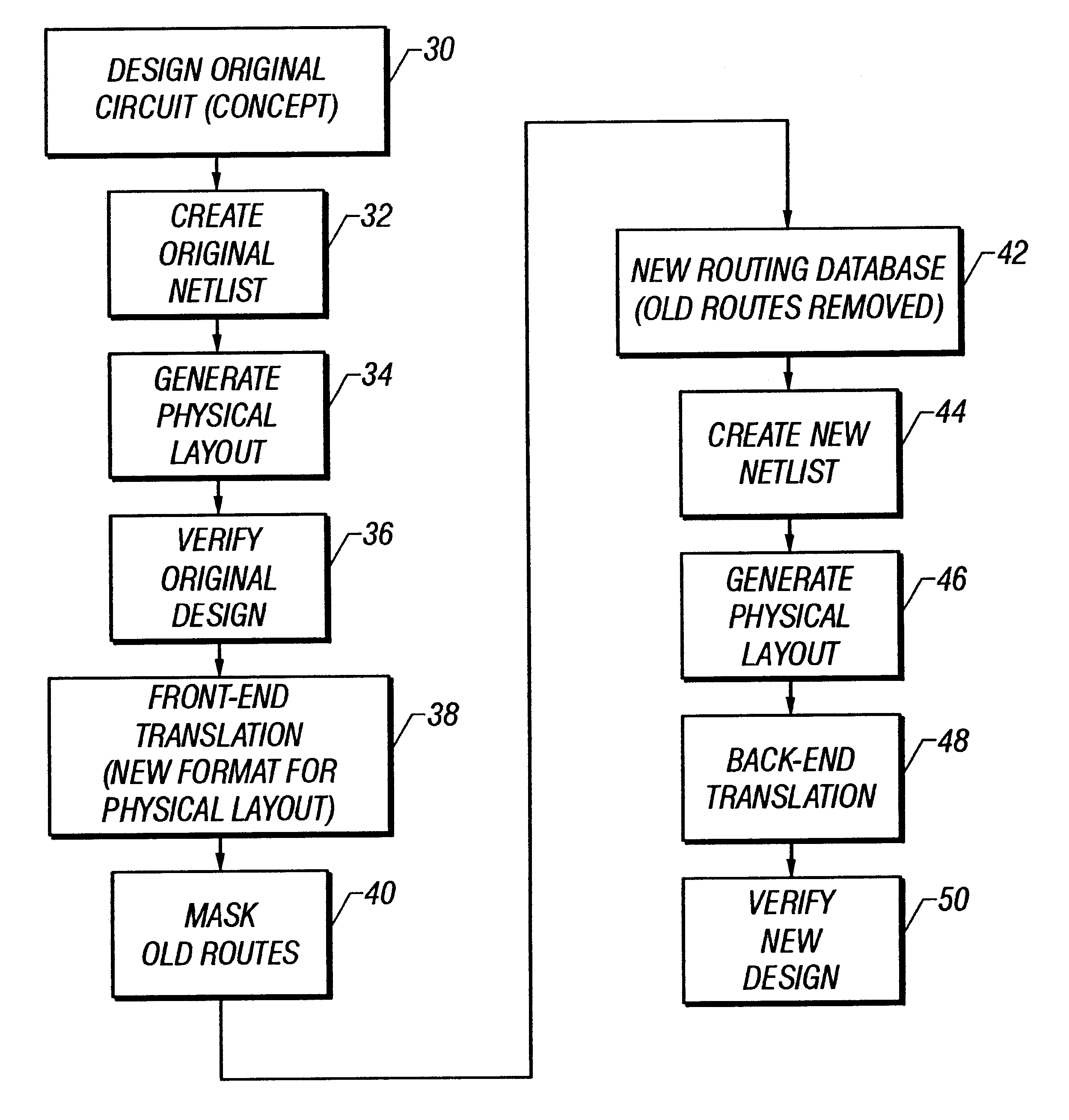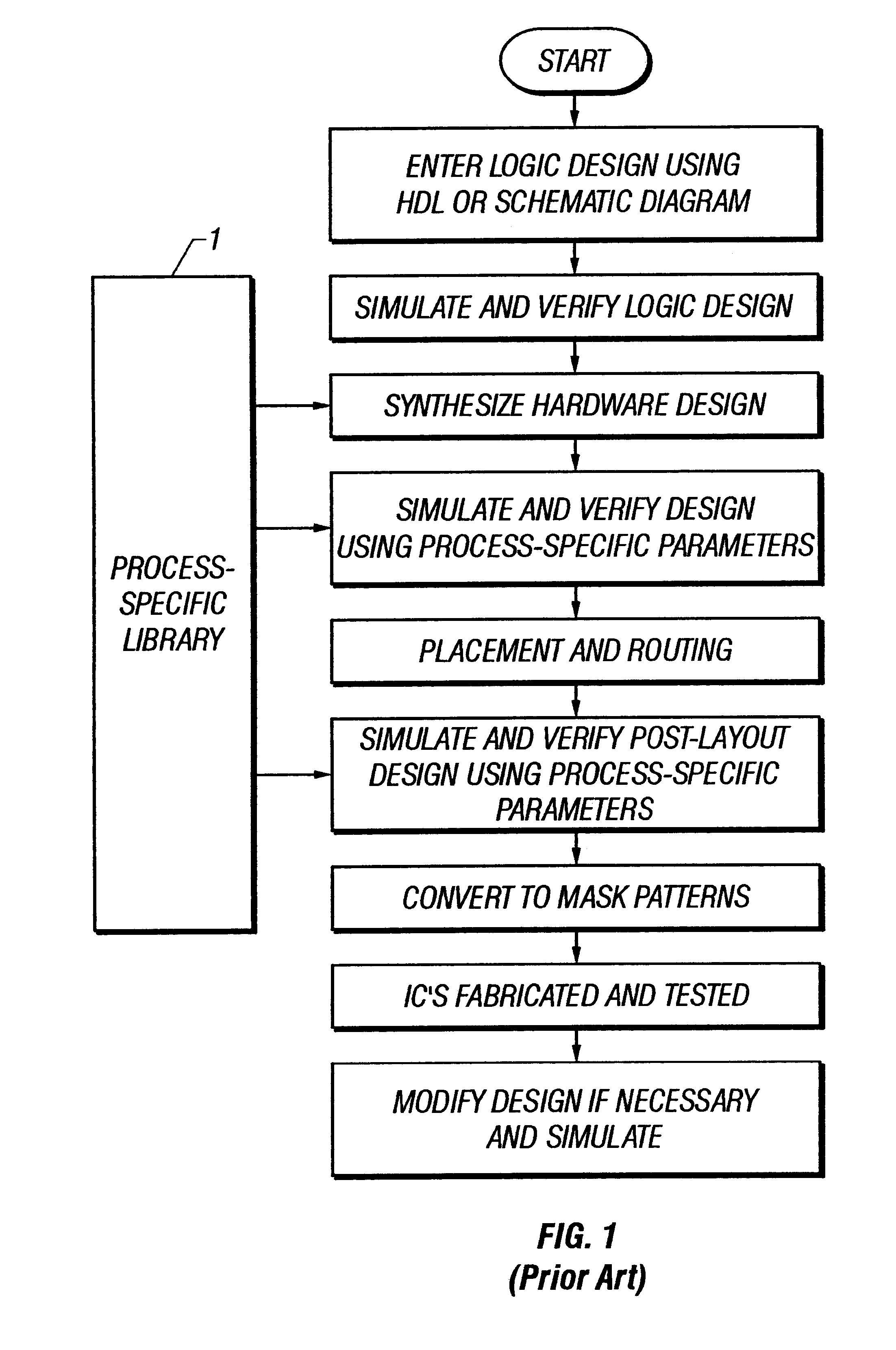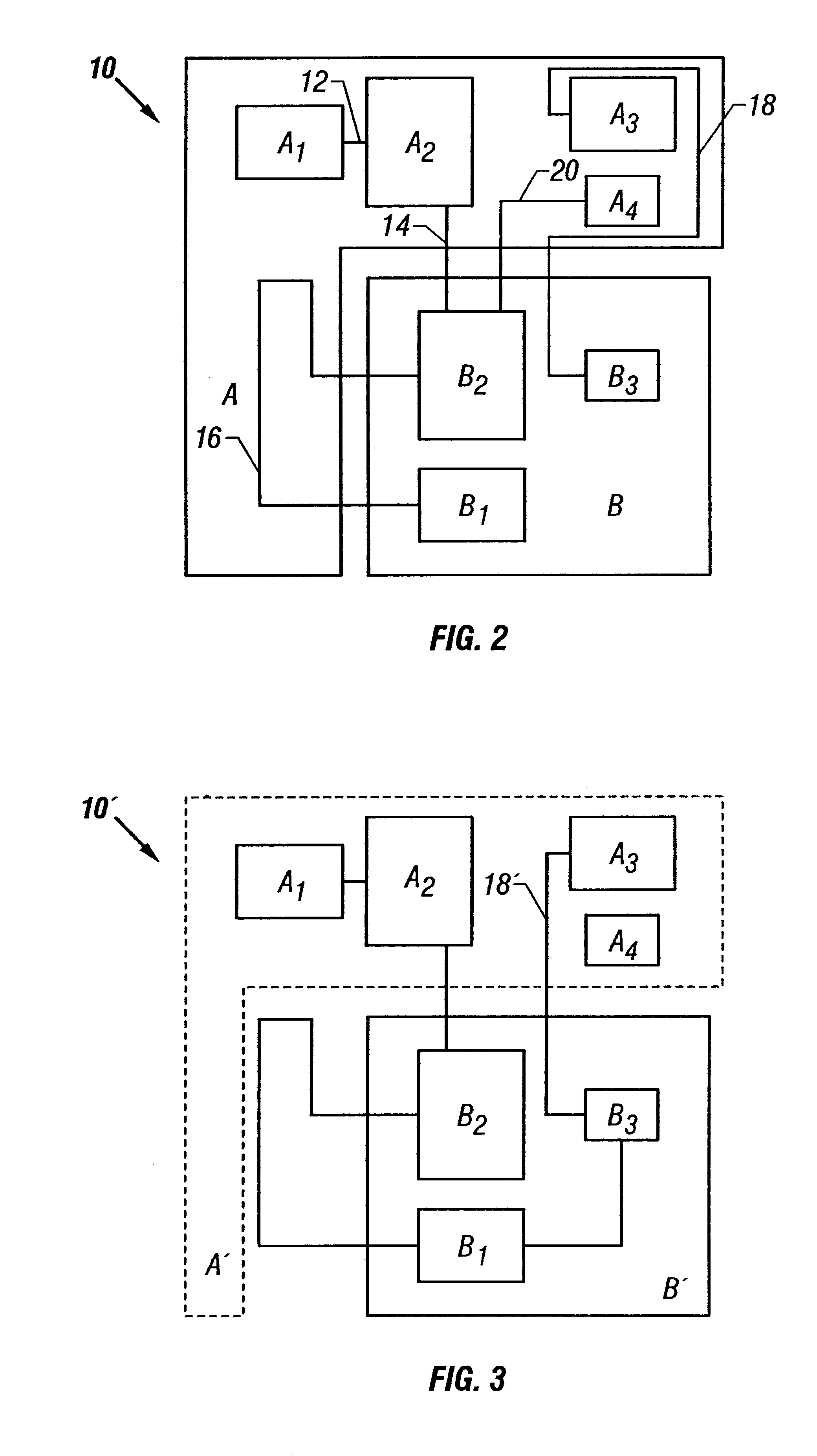Abstracting netlist to manage routing information
a routing information and abstract technology, applied in the field of electronic circuits, can solve the problem of nothing in the prior art which allows a designer to take advantage of new tools on top of old design tools
- Summary
- Abstract
- Description
- Claims
- Application Information
AI Technical Summary
Benefits of technology
Problems solved by technology
Method used
Image
Examples
Embodiment Construction
)
The present invention is directed to a method of designing integrated circuits, such as a microprocessor, using computer-aided design (CAD) systems. As explained in the Background, these CAD systems utilize netlists to lay out the physical interconnections between logic circuits (standard cells) on an integrated circuit substrate (i.e., silicon wafer) using place and route tools. In the prior art, it is not feasible for the designer to retain an old design using a netlist created from an earlier CAD system, and still take advantage of new tools in conjunction with the old design tools. The new methodology taught by the present invention allows a circuit designer to easily retain the previous routes, while enjoying the benefits of top-level design tools.
For example, many routes in an old design are manually added or edited to take care of problems such as timing, noise, cross-coupled capacitance, shorting, etc. These routes may be part of the final design and may need to be preserve...
PUM
 Login to View More
Login to View More Abstract
Description
Claims
Application Information
 Login to View More
Login to View More - R&D
- Intellectual Property
- Life Sciences
- Materials
- Tech Scout
- Unparalleled Data Quality
- Higher Quality Content
- 60% Fewer Hallucinations
Browse by: Latest US Patents, China's latest patents, Technical Efficacy Thesaurus, Application Domain, Technology Topic, Popular Technical Reports.
© 2025 PatSnap. All rights reserved.Legal|Privacy policy|Modern Slavery Act Transparency Statement|Sitemap|About US| Contact US: help@patsnap.com



